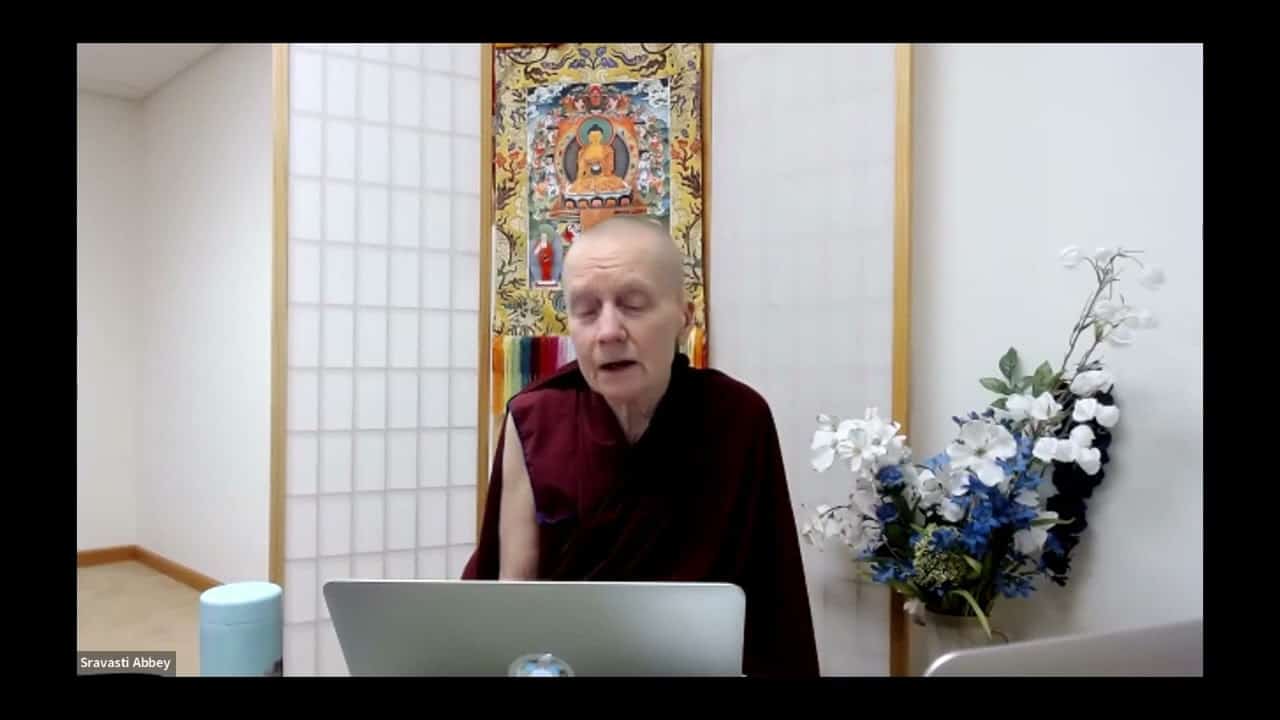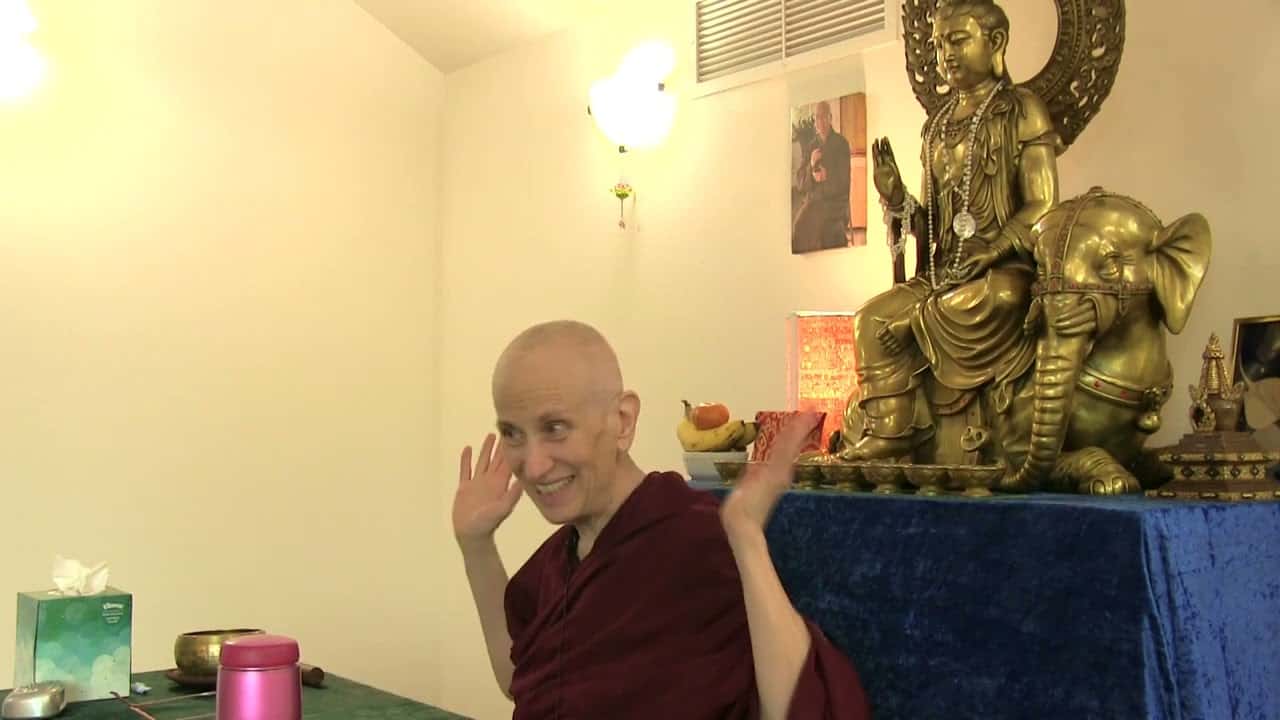The “Ye Dharma Dharani”
70 Samsara, Nirvana, and Buddha Nature
Part of an ongoing series of teachings (retreat and Friday) based on the book Samsara, Nirvana, and Buddha Nature, the third volume in The Library of Wisdom and Compassion series by His Holiness the Dalai Lama and Venerable Thubten Chodron.
- Happiness in samsara and happiness after liberation
- Examining the defects of craving for sense pleasures
- Causal process for samsara and nirvana
- Four noble truths of the aryas from the dharma phrase
- Seven resultant links and five causal links
- Four kinds of self-confidences proclaimed by Buddha
- What to practice and what to abandon
- Forward order and reverse order of the afflictive flow of 12 links
- Forward order and reverse order of the purified flow of 12 links
- Verses by Nagarjuna regarding the causes of samsara and cessation
- Cyclic existence does not arise from self, others, both or without a cause
Samsara, Nirvana, and Buddha Nature 70: The Ye Dharma Dharani (download)
Contemplation points
- Contemplate the different kinds of happiness: On the one hand, sensual happiness, happiness with defilement and worldly happiness, and on the other renunciation, happiness without defilement, and spiritual happiness. Make some examples of each. What is the difference between them in your own experience? Which one would you most like to work on?
- What might a deep sense of Dharma happiness be like? Describe it in your own words, using your imagination. How might Dharma happiness change the way you relate to others?
- Spend some time looking at 2 or 3 of the afflictions that most disturb your mind, remembering a time when it was strong in your mind, and then ask yourself “Am I happy?” Are you happy when your mind is ruminating in anger or attachment or jealousy? Is it a worthwhile use of time and energy now? How do they also hinder your long term happiness?
- Contemplate each of the four lines in the Ye Dharma dharani. How does each relate to the four truths and the four self-confidences of a Buddha? If it’s helpful, use the chart in the text to aid your contemplation. How does understanding these help us to attain the four bodies of a Buddha?
- The text on p234 states: “This short dhāraṇī contains great meaning because it incorporates the four truths, the eightfold path,… “ We investigated how the four truths tie in, but how might the eightfold noble path relate to the dharani?
- Why is it so important to have a robust understanding of karma and its effects before meditating on emptiness? How does this understanding of karma and its effects influence daily choices and actions?
- Review the forward and reverse orders of afflictive dependent origination repeatedly. Generate the aspiration to be free from samsara.
- Review the forward and reverse orders of purified dependent origination repeatedly. Have conviction that it is possible to free yourself from samsara.
Venerable Thubten Chodron
Venerable Chodron emphasizes the practical application of Buddha’s teachings in our daily lives and is especially skilled at explaining them in ways easily understood and practiced by Westerners. She is well known for her warm, humorous, and lucid teachings. She was ordained as a Buddhist nun in 1977 by Kyabje Ling Rinpoche in Dharamsala, India, and in 1986 she received bhikshuni (full) ordination in Taiwan. Read her full bio.


